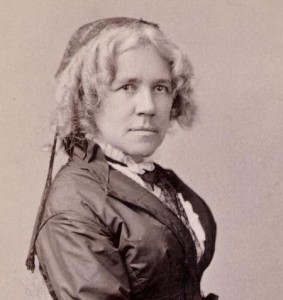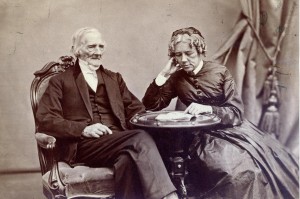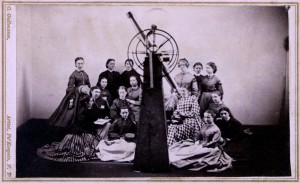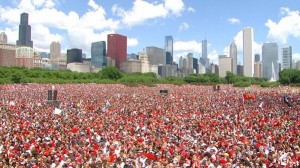August 1st marks the 195th anniversary of the birth of Maria Mitchell, famed astronomer and educator. Much has been written about Mitchell’s public life and career, so we won’t take up more space here recounting that. And much has been written about how Mitchell nurtured her students and served as an inspiration for successful careers in the sciences for several Vassar graduates, so that is not new information. What is new is our expanded access to how students felt on a very personal level about Maria Mitchell – made possible by the digitization of a large section of the diaries and letters housed in Vassar’s Archives and Special Collections. Below are excerpts from some of those materials.
Miss Mitchell I admire more than I do any woman here, she is tall, has grey hair which she wears done up in two little knobs on each side of her head, that look as if they would be curls sometime, the rest is in a black chenile net drawn up on top of her head just as Emma’s is. She being a Quakeress always wears black and grey, and her whole appearance never alters a particle. She is a noble woman.
– Martha S. Warner to her mother, October 1865
Miss [Mitchell], I do love so much, it will always be one of my happy memories that she kissed me good bye – when I had reached home at last – of course it was a very ordinary thing – but then I did not expect it from her. She would have done it to any of her class of course as she did to me.
– Sarah L. Blatchley to Isabel Treadwell, 28 December 1865
Maria Mitchell came up to our room the evening, she is very pleasant, her father enquired particularly about all our family and asked if you Father did not teach once, and after I told him that you had not, would hardly give up the idea but what you had, it seems quite like home, to go over there, they are so pleasant and social.
– Abigail and Caroline Slade to their parents, 21 January 1866
I think everything of Miss Mitchell. She is just as good as she can be, so very smart and yet perfectly simple in her manners. I went over to the observatory the day after I got here and rec’d a very warm welcome from Mr. Mitchell, a very cordial one from Miss Maria. He said he had inquired ever since college began of any one that might know when I was expected. I staid an hour or more and shall go again in a day or two.
– Mary Woodworth to her mother, September 1868
Almost every night some of us go out star gazing. Passers by would think us crazy from the frantic manner in which we rush about shouting “I know what that is.” “Oh! what is that name?” and the constant repetition of some names as, “Capella, Capella.” Last night we learned three new names, and fortunately have remembered them. We find Prof. Mitchell perfectly charming, as she has always been reported to be. One night we went over to ask her some question and were treated to fine large pears. Think we shall go again.
Julia M. Pease to “Carrie,” October 1873









